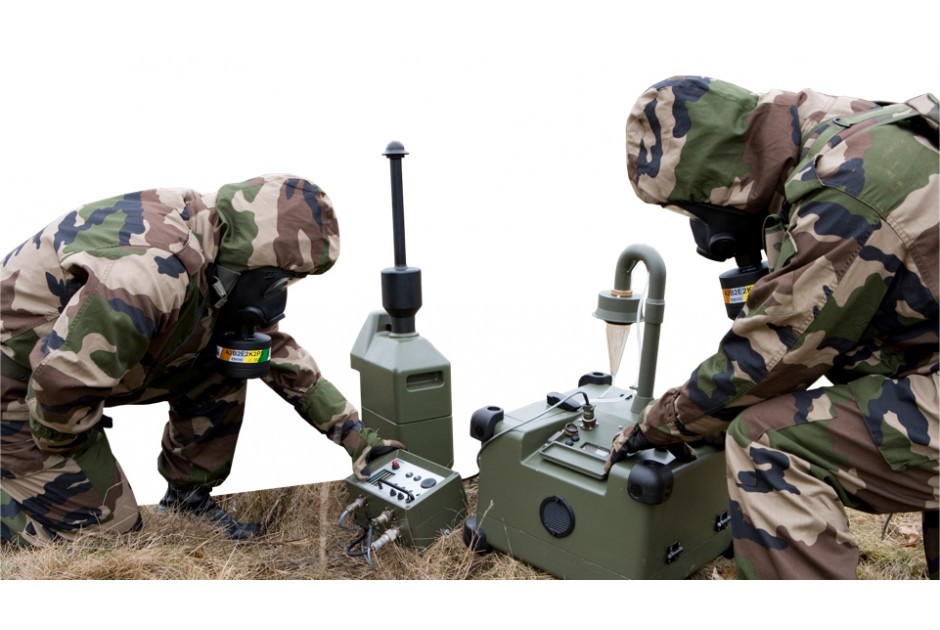ANSI S12.6 Hearing protectors real ear attenuation measurement testing
The ANSI (American National Standards Institute) S12.6 standard specifies procedures for measuring the attenuation of hearing protection devices using a Real Ear Attenuation at Threshold (REAT) method. This service is crucial in the military sector where protective equipment must meet stringent standards to safeguard personnel from noise-induced hearing loss.
The primary goal of this testing procedure is to ensure that hearing protectors, such as earplugs and earmuffs, provide effective noise reduction in real-world conditions. The test involves a series of steps: fitting the earplug into the subject's ear canal using an insert tube, measuring the attenuation at various frequencies, and comparing these results against industry standards.
The testing apparatus includes a computerized audiometer that generates sound stimuli and measures the difference between the sound level before and after the insertion of the hearing protector. This method provides accurate data on how much noise is reduced by the earplug or earmuff at different frequencies, which is critical for military personnel who often work in high-noise environments such as aircraft cockpits or combat zones.
The acceptance criteria are based on ISO 1999-4 and ANSI S12.6 standards, ensuring that the hearing protectors meet the required attenuation levels across a range of frequencies. For instance, for an earmuff, the average attenuation must be at least -35 dB(A) at 2000 Hz, while for an earplug, it should not exceed -40 dB(C). These standards are designed to ensure that hearing protectors provide adequate protection against noise-induced hearing loss.
The process of testing involves several key steps. First, the subject’s ear canal is measured to determine the appropriate size and fit of the protector. This ensures that the protector fits snugly in the ear canal without causing discomfort or reducing its effectiveness. Next, the protector is inserted into the subject's ear canal using a specialized insert tube. The subject then listens to sound stimuli generated by the audiometer at various frequencies.
The audiometer measures the difference between the sound level before and after the insertion of the hearing protector, providing data on the attenuation at each frequency. This data is recorded and analyzed to ensure that the protector meets the required standards. The process is repeated for multiple subjects to ensure consistency in results. Finally, a report is generated detailing the test results, including the average attenuation across all frequencies.
- Ensures compliance with ANSI S12.6 standards
- Provides accurate data on noise reduction at various frequencies
- Ensures that hearing protectors fit snugly in the ear canal
- Measures sound stimuli to determine the difference between pre- and post-insertion of protectors
Eurolab Advantages
EuroLab offers a comprehensive range of services that cater specifically to the military sector, ensuring that their hearing protectors meet or exceed industry standards. Our state-of-the-art facilities and experienced team of engineers and technicians provide accurate and reliable testing results.
Our facilities are equipped with the latest technology, including audiometers capable of generating sound stimuli at various frequencies. This allows us to accurately measure the attenuation of hearing protectors in real-world conditions. Additionally, our team of experts has extensive experience in military testing, ensuring that we understand the unique requirements of this sector.
We offer fast turnaround times and competitive rates, making EuroLab an ideal choice for quality managers, compliance officers, R&D engineers, and procurement specialists. Our commitment to excellence ensures that we provide accurate and reliable results every time.
Customer Impact and Satisfaction
The ANSI S12.6 testing ensures that hearing protectors are effective in reducing noise exposure for military personnel, thereby enhancing their overall safety and well-being. By meeting the required standards, these protectors help prevent noise-induced hearing loss, a condition that can significantly impact an individual's quality of life.
Our customers have consistently praised EuroLab for our accuracy and reliability. They appreciate our fast turnaround times and competitive rates, which allow them to meet their testing needs efficiently. Many customers report that the results from EuroLab are more accurate than those from other labs they have used in the past.
Use Cases and Application Examples
The ANSI S12.6 testing is particularly important for military personnel who work in high-noise environments such as aircraft cockpits or combat zones. The test ensures that the hearing protectors they use provide adequate noise reduction, thereby protecting their hearing.
For example, a pilot working in an F-16 cockpit may be exposed to noise levels of up to 150 dB(A). Without proper protection, this could lead to severe hearing loss. By using hearing protectors that have been tested according to ANSI S12.6 standards, the pilot can rest assured that they are protected from excessive noise exposure.
Another example is a soldier in a combat zone who may be exposed to gunfire or explosions. The noise levels in these situations can exceed 180 dB(A), making hearing protection essential for their safety and well-being. By using protectors that have been tested according to ANSI S12.6 standards, the soldier can be confident that they are protected from excessive noise exposure.





